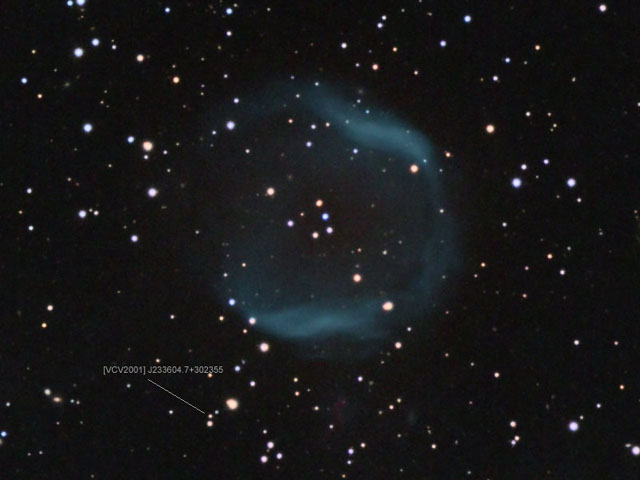| Description | Images |
Object name: JONES1Designation(s): JONES1, Jones 1 is the common name in the U.S. for PK104-29.1. In much of the rest of the world, it is known as the Horseshoe Nebula. It is located in the constellation of Pegasus. This is a very large faint nebula barely seen in my 10" with an OIII filter. There aren't many images of this one on the net. Most of those are taken with OIII and H alpha filters. Many of those are of Jones Emberson 1 rather than Jones 1 indicating there is a lot of confusion over these two very different planetaries. I used just standard LRGB for my image and still was able to capture it quite well. There is a faint blob below it. I don't know if this is part of the planetary or not. H alpha images taken with a 3 angstrom filter to keep out NII, show it is H alpha, not the more common NII found in planetary nebulae. I was unable to find any reliable info on the distance to Jones 1. Only one comment that it was a bit over 2000 light years away but no source for this was given. Planetary nebulae are very hard to get good distance data on so this isn't surprising. Several stars are seen in its core. The blue one is the "white" dwarf that is causing the nebula to glow mostly in OIII light. Related Designation(s):JONES1, |

